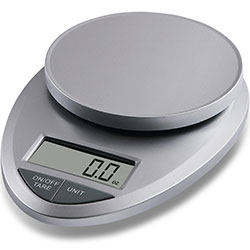First off, why do we use 1 gallon (3.8L) and 5 liters equally on this site?
Simply because jugs available in Europe come in 5 liters
If I buy a grain mix for one gallon, should I worry about brewing 5 liters with it?
You obviously don’t want to brew 5 liters with ingredients calculated for 24% less
Simply follow the instructions for your mix (download them from the right side of this page) with 3.8L (1 gallon) of water and you’ll be all set
The remaining empty space at the top of the fermenter is not a problem at all, it actually allows a more efficient oxygenation when you shake the fermenter and it prevents the “krasen”, the foam on top of your beer to end up in the blow-off tube
What do I have to keep in mind if I brew 5 liters instead of 1 gallon?
Make sure to convert every amount from the recipe you are following by multiplying it by 1.32
For example, 2lb (907g) of Pilsen malt in a 1 gallon recipe means 907*1.32 = 1.2 kg in a 5 liters batch
Count about 2.5L mash water (against 2L for a gallon) + 4.5L for the sparge (against 4L for a gallon)
As about 20% evaporates during the boil, you will end up with your 5L wort
A 5-liter batch typically takes about 1.5 kg of fermentables (against 1.2 kg for a gallon), which means your mash may exceed a 9/23 cm strainer capacity. You may consider getting the 10/25 cm version US|CAN|UK instead or simply sparge your grain in two steps
Some unit conversions
(in case you decide to use recipes found online which are not in your measuring habits)
To convert any amount in a 1 gallon recipe to the required amount for a 5 liters batch, multiply it by 1.32
Example: 2lb (907g) of Pilsen malt in a 1 gallon recipe means 907 x 1.32 = 1.2 kg in a 5-liter batch
1 US gallon = 3.8L
4 liters = 1.06 gallon
5 liters = 1.32 gallon
Gallons are divided into “quarts”, which roughly equal 1L
1qt = 0.95L
1L = 1.05qt
Quarts are made of two pints, so, roughly half a liter
1 pint = 473 ml
500 ml = 1.06 pint
Beer recipes and grain bills in America come in pounds (lb) and ounces (oz); in Europe you’ll find kilograms (kg) and grams (g)
1lb = 454 g
500 g = 1.1lb
2lb = 910 g
1 kg = 2.2lb
1oz = 28 g
10 g = ⅓oz
100 g = 3.5oz
You will also meet cups when priming with honey
1 cup honey = 340 g
100 g honey = 0.3 cups
Finally, you will find tablespoons and teaspoons
Do not use the recommended 3 tablespoons honey by the Brooklyn Brew Kit for priming, that’s generally too much, use a Priming sugar calculator instead
1 tablespoon = 15 g
10 g = ⅔ tablespoon
1 teaspoon = 5 g
10 g = 2 teaspoons
For all these measurements, an electronic kitchen scale comes in very handy US|CAN|UK especially if it has the tare feature that allows to ignore the container weight
How many beers?
Beer bottles in America come in 12oz (355ml) and pints (473ml) and in Europe it’s 33cl (⅓L) and 50cl (½L)
Assuming that you lose about a pint because of the volume of the trub at the bottom of the fermenter, a gallon batch will yield 9 bottles of 12oz or 7 bottles of a pint
And 5 liters will give about 13 bottles of 33cl or 9 bottles of 50cl
Brewer
Latest posts by Brewer (see all)
- 1-gallon Plastic Beer Fermenter - 03/10/2017
- Create beer bottle labels - 26/01/2016
- Grow your own hops - 30/03/2015
